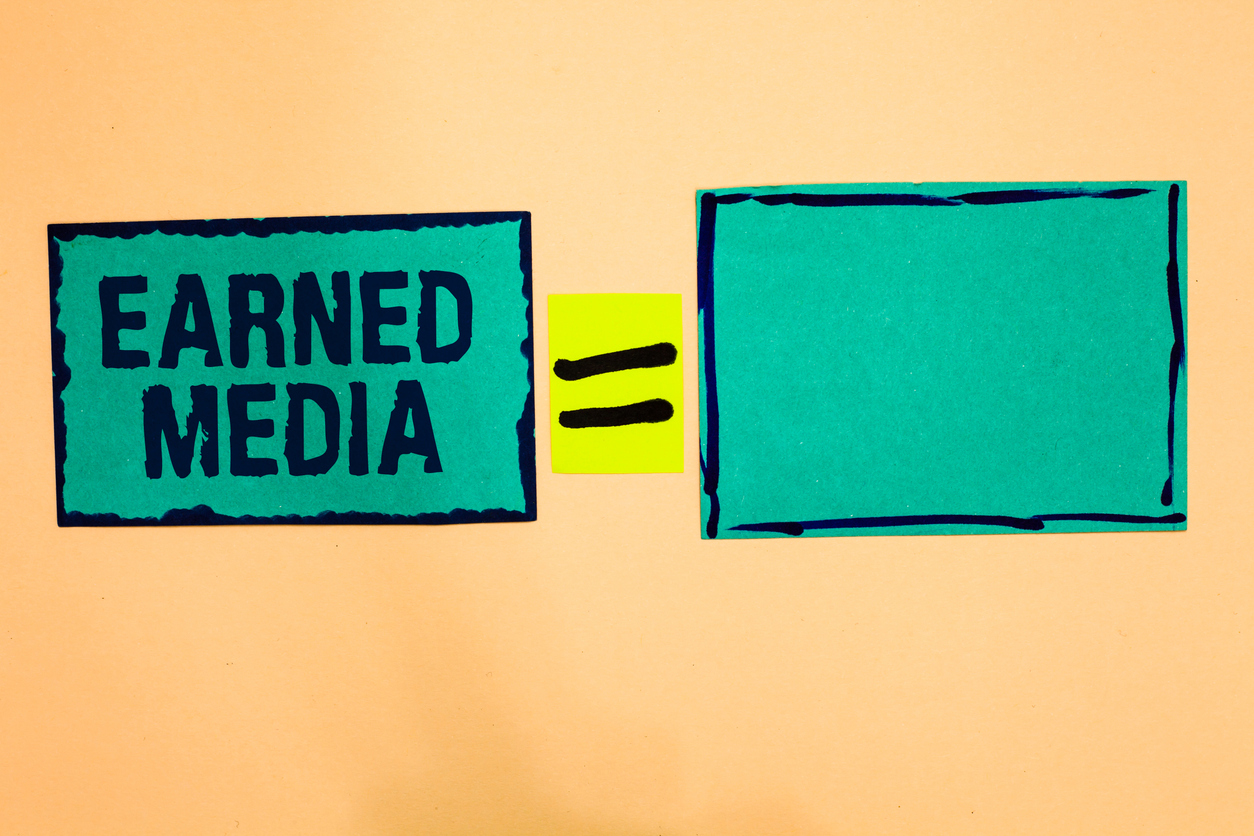
Earned media: It’s not just a boring press release
When people hear “earned media,” they instantly think, “boring announcement.”
But their thinking is shortsighted. Earned media is a disguised, incredibly fruitful performance marketing and SEO strategy.
It has the potential to get folks into your pipeline, build credibility, and accelerate the deal cycle — the panacea for marketers.
Book a 30 minute call
Reserve 30 minutes with a strategist and get 30 hours worth of value.
So why aren’t more companies using it to their advantage?
Well, the truth is, they’re not doing earned media right.
On the Performance Marketing Insiders podcast, Jordan Sher, VP of Corporate and Brand Marketing at Gainsight, revealed his secrets to expertly crafted earned media — from leveraging data you already have to making the most out of your community to using ChatGPT.
In this article, we’re sharing them with you.
Why earned media?
The simple answer? Press releases and media attention have a hidden benefit: SEO.
Think about it: a heavy content marketing piece goes into it. And you gain some impressive backlinks when you do it. The distribution process goes a little something like this:
- You choose a wire service.
- That service posts your post on its own internal wire service.
- That service also posts your post on external wire services.
- Your news is amplified to all the wire services that subscribe to each service.
For example, say you’re using Business Wire. They’ll distribute your post to the high-tech media corridor. Every magazine publication that subscribes to the high-tech media corridor, like Tech Crunch, Wall Street Journal, and Yahoo Finance, will all get the news.
If they publish it, you’ll get amazing backlinks to your site. Issuing press releases is just a great ongoing long-tail SEO strategy.
And that’s just the tactical reason why you should consider it.
Strategically, earned media is crucial for brand awareness. In all likelihood, most of your target audience doesn’t take a linear path from awareness to close. When they’re in a deal cycle, they do their own research.
They scan review sites, talk to your sales team, speak with colleagues. In that due diligence, part of what they’ll see is how your company is perceived by analysts and the media at large. You never know when press coverage could provide the credibility your sales team needs to move a deal through.
How to create earned media that doesn’t suck
We’ve all read press releases that put us to sleep. But earned media doesn’t have to be this way. So let’s explore a few ways to jazz up your earned media assets and strategy.
1. Focus on brand evangelism
Using press releases to drive traffic back to the core components of your website is still a tried and true strategy.
If you’re a zero-to-one startup, you must ensure you’re making the best investment in content. And press releases can be that if you’re hitting on what makes your company unique. Writing press releases built for awareness, built for organic SEO that make it easy to root for your company, is a better strategy in modern search than specific content marketing.
In his experience at Gainsight, Sher noticed that “Blog traffic to Gainsight has gone down dramatically. And the use and effectiveness of gated content has gone down. Yet the awareness value of a press release kind of endures.”
To get to the heart of what’s important to your customers, meet with them. Sher mentioned that Gainsight’s CEO has 25 customer meetings a week. He recaps the conversations on Slack and sends an internal Sunday newsletter to inform every piece of Gainsight content — including earned media.
2. Be specific about your product news
Hitting the wires with a, “we did a Q1 release”-type post isn’t going to be memorable. Instead, you need to emphasize the main benefits of what you’ve launched to your ideal audience. Explain in detail why you built what you built, what it does, and why that’s important.
Leaning heavily on the why can help potential customers identify with the pain points you’re trying to solve and gets them curious enough to click through to your website.
3. Get customer quotes
Don’t just use any customer. Go for the most well-known ones, and make sure they’re happy with your product. If a buyer is researching and sees IBM used your product or hired your team, that’s huge validation right there.
Getting quotes from household names isn’t only meant to impress people; it’s also a way to spread the word. The customer’s marketing team might be willing to post it on their website or social media to get you extra coverage. You might even consider doing press releases just to announce a large deal.
4. Ask customers to speak with the press
Having a customer logo and quote is great, but getting customers to meet with the press when the release is issued is even better.
First, it gives your brand additional credibility — a customer is willing to speak with the press to support your product. Second, reporters are more likely to pick up the story when there’s a customer primed and ready to speak to the value of your product. Making the press’s job easier is money in the bank.
5. Use the data you already have
Most companies are collecting massive amounts of data about their customers and have access to hundreds of them. Why not make the most of being in that position?
Send a survey to your customers and pair it with your first-party data to create a compelling research report and put it out on the wires.
Sher takes this approach at Gainsight: “We hire a third-party research firm to issue a number of surveys throughout the year. We reach out to our community of founders, community of users, and our professional network of customer success leaders. We polish the results and publish it into what we call a CS Index.”
And the results of doing this are undeniable: “We write tons of ebooks, create infographics, publish blogs, but the CS Index is the number one contributor to pipeline from a content perspective, and it’s our number one contributor to press coverage.”
Writing these reports helps Gainsight elevate the entire customer success industry, and the fact that they use a third-party research firm lends an extra layer of credibility to their findings.
6. Explore a community strategy
Communities aren’t directly related to earned media, but they can have a powerful network effect on your brand. Forming a community of people who really love and get value from your product or service and treating them well with fun events, conferences, prizes, and awards can be an excellent addition to your earned media strategy.
For instance, Gainsight runs a conference called Pulse that focuses solely on the customer success community. People in the Gainsight community are incentivized to bring their friends. When they have a great time there, they bring their friends the following year, and the flywheel of brand awareness continues to turn.
Gainsight takes this approach so often that Sher’s team jokes that the organization is “an events company that sometimes masquerades as a software platform.”
7. Don’t sleep on ChatGPT
Think carefully about how ChatGPT is poised to change the publishing industry.
Consequences for search
In the future, we won’t go to Google, type in “best Thai restaurant near me,” and click each result individually. We’ll be asking ChatGPT that question, and it will spit out the answer. We won’t have to visit the restaurants’ websites.
Eventually, ChatGPT will just be another algorithm you’ll have to master. And part of that will involve earned media. ChatGPT will start scoring sources of information, and media publishers will have credibility. Investing in earned media at the right kinds of outlets can help you maximize the chances of ChatGPT interaction.
Consequences for your team
And while this may not be happening yet, ChatGPT optimization will become a must-have skill, so think about allocating some of this research to the star players on your team. Have them start by asking ChatGPT to adopt your ICPs and figure out how those people are searching and what they’re searching for.
Sher’s teams are already using ChatGPT in their workflows. As a company that heavily invests in video to surprise and delight customers, his team uses ChatGPT to generate fun, new ideas for engaging video content. They also use it to write recaps of webinar recordings. And they use it to write social posts.
He explains, “I am a huge advocate of getting comfortable with it because it’s not something I believe you can stop. And I believe that generative AI will not necessarily replace people, but it will replace people who resist it.”
Regardless of how you feel about it, it’s important for you to test it.
Capitalize on the intersection between earned media, brand, and SEO
The real thing you’re building with an earned media strategy is trust.
We’ve learned that the coverage you get and the evangelists in your community are almost synonymous with the quantity and quality of your backlinks and brand search volume. They get you higher in search. They get you in front of your most valuable prospects. And in long deal cycles, the credibility you’ve built will get you far.
Hear more of what Jordan Sher has to say about earned media, ChatGPT’s impending impact on content teams, and how he helps Gainsight maintain its position as a leader in the customer success market on the Performance Marketing Insiders podcast.
If this post made you crave more digital marketing content, sign up for our next monthly Growth Clinic where you’ll hear dos and don’ts from B2B and B2C marketing experts.
Most newsletters suck...
So while we technically have to call this a daily newsletter so people know what it is, it's anything but.
You won't find any 'industry standards' or 'guru best practices' here - only the real stuff that actually moves the needle.







